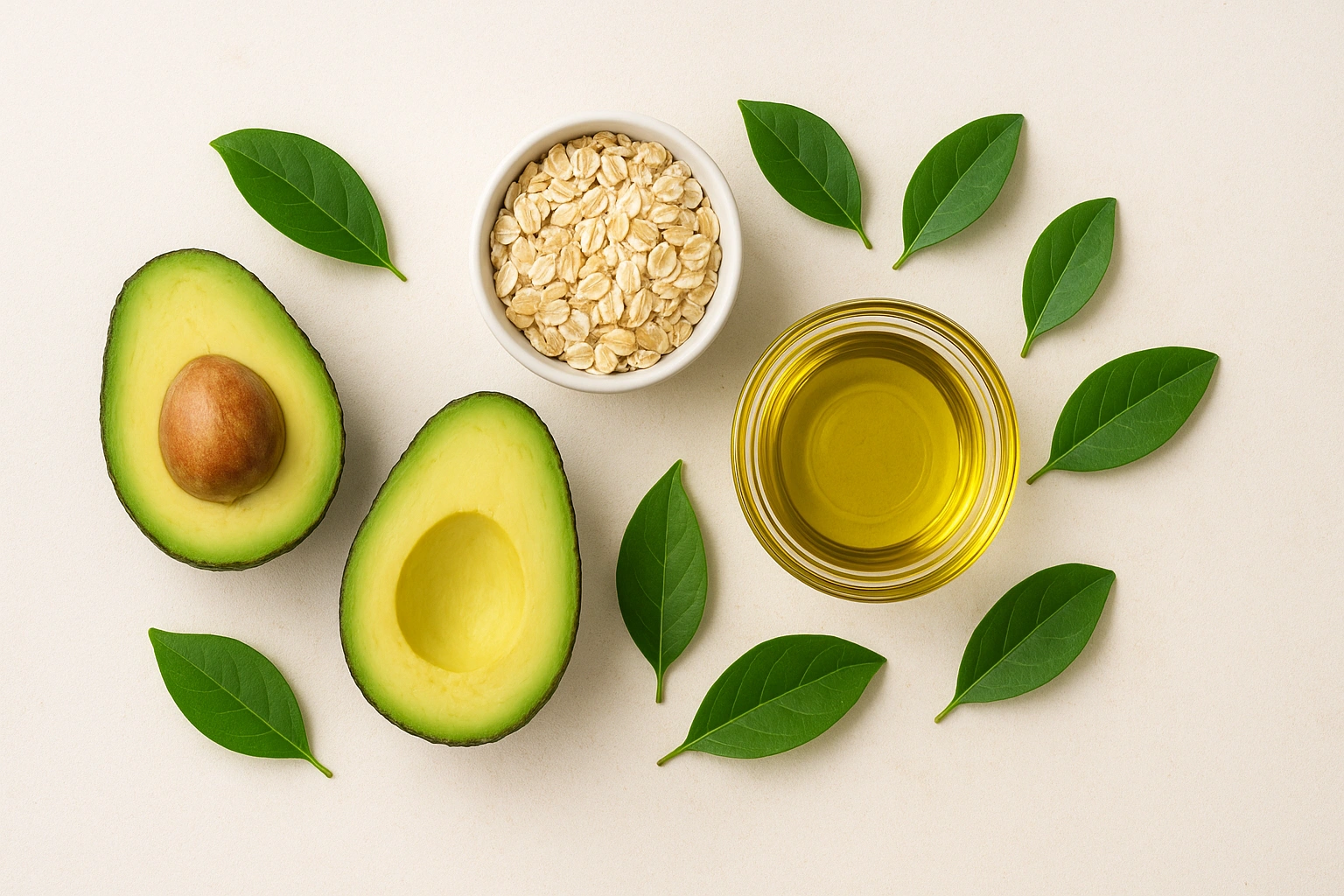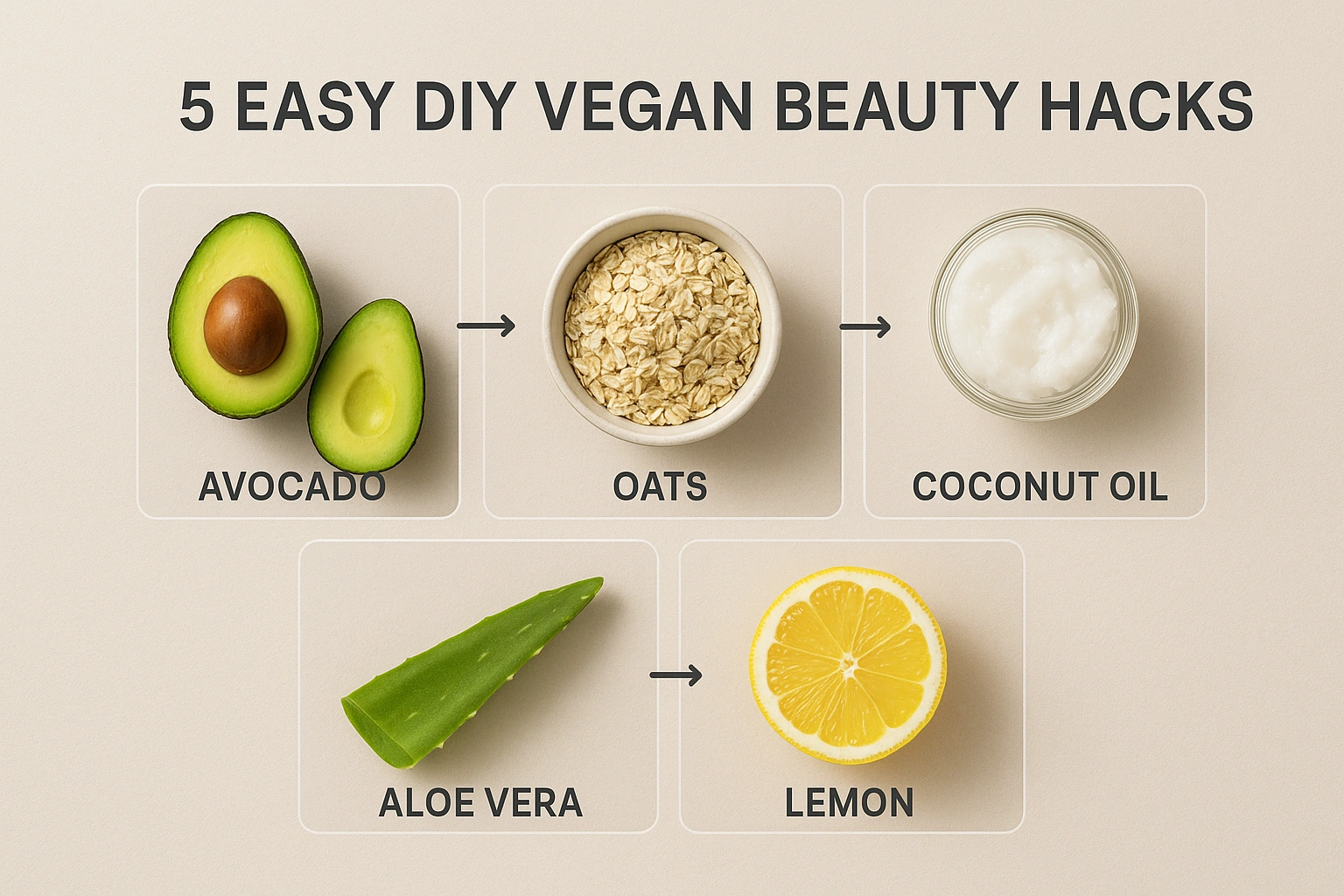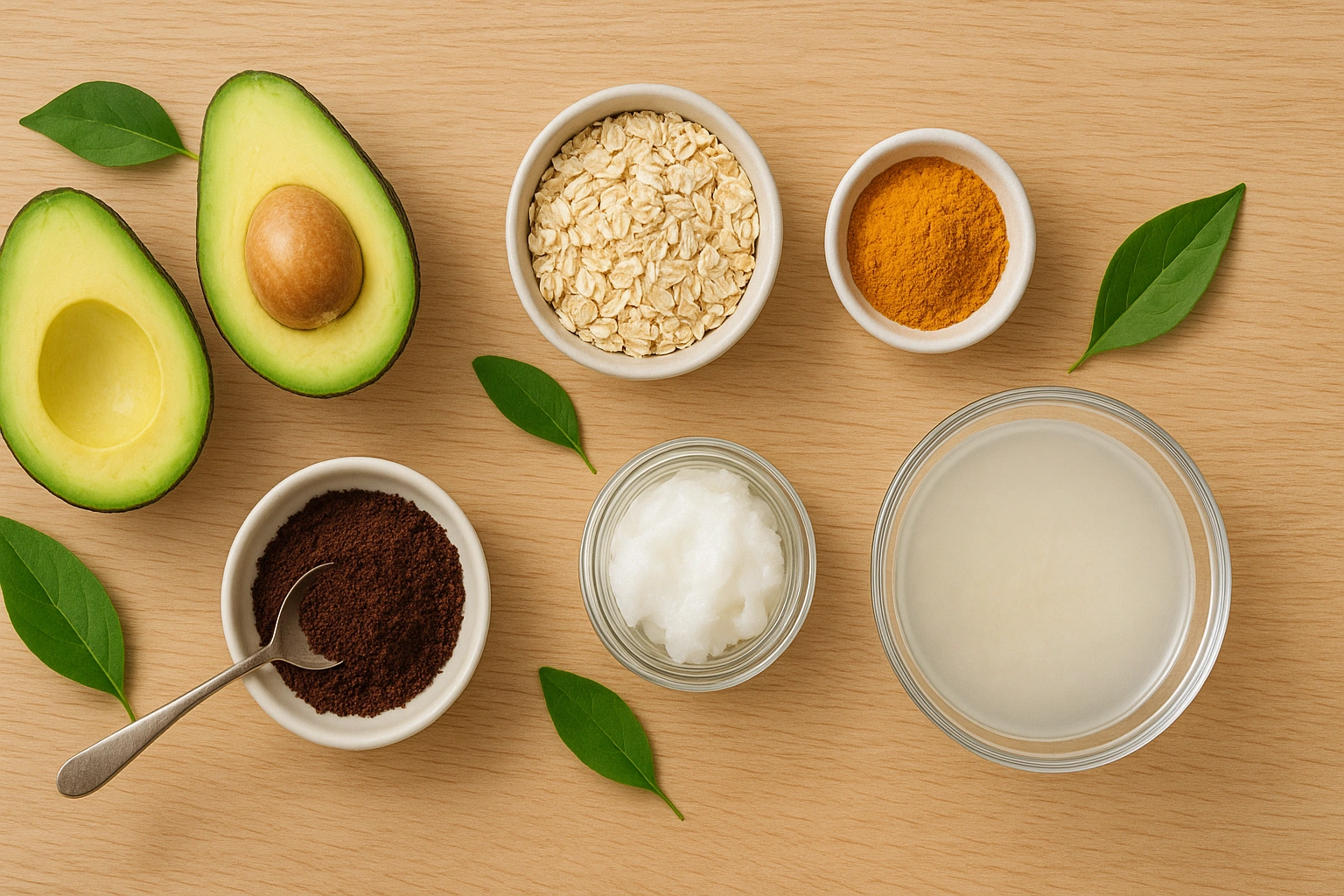What if I told you that some of the most powerful skincare ingredients weren’t in a fancy, expensive bottle, but already part of simple DIY vegan beauty hacks you can try at home?
The clean beauty world can seem intimidating and costly, yet DIY vegan beauty hacks prove that glowing, healthy skin is possible with just a few natural ingredients from your pantry.
With DIY vegan beauty hacks, you can achieve radiant results without relying on synthetic formulas, keeping your routine affordable and effective.
This guide is your ultimate resource for the best DIY vegan beauty hacks of 2025, sharing recipes from face masks to scrubs that put control of your skincare back in your hands.
- What Are DIY Vegan Beauty Hacks?
- The Amazing Benefits of Kitchen-Based Skincare
- 5 Easy DIY Vegan Beauty Recipes to Try Today
- My Experience with a DIY Coffee Scrub
- Comparison: Kitchen Ingredients vs. Their Store-Bought Counterparts
- Common Mistakes to Avoid with DIY Beauty
- Expert Tips & Best Practices
- Frequently Asked Questions (FAQ)
- Conclusion
What Are DIY Vegan Beauty Hacks?
DIY vegan beauty hacks are simple skincare and beauty treatments you can make at home using plant-based ingredients already in your kitchen.
At their core, DIY vegan beauty hacks are about getting back to basics, choosing fresh and natural options instead of relying on synthetic chemicals.
By practicing DIY vegan beauty hacks, you nourish your skin with whole ingredients that avoid preservatives and animal byproducts.
In many ways, DIY vegan beauty hacks represent the ultimate form of homemade organic skincare, giving you full control over what touches your skin.
This trend is more than just a throwback to old traditions; it’s a modern response to a desire for transparency and control. As noted by Wired, consumers are increasingly skeptical of opaque ingredient lists and are turning to DIY solutions to ensure their products are truly clean and ethical. In 2025, the kitchen has become the new beauty lab.

The Amazing Benefits of Kitchen-Based Skincare
Tapping into your pantry for your beauty routine shows how DIY vegan beauty hacks can deliver amazing results without unnecessary spending.
One of the biggest strengths of DIY vegan beauty hacks is that they give you full control over the ingredients touching your skin.
Beyond affordability, DIY vegan beauty hacks also ensure freshness and potency, something store-bought products can’t always guarantee.
Ultimately, DIY vegan beauty hacks bring benefits that go far beyond saving money, making them a smart and sustainable choice.
Total Control Over Ingredients
When you make it yourself, you know exactly what’s going onto your skin. There are no hidden fragrances, parabens, or fillers. This is especially beneficial for those with sensitive or allergy-prone skin who need to avoid specific triggers.
Freshness and Potency
Store-bought products can sit on shelves for months, losing their potency over time. When you whip up a DIY mask with a fresh avocado, your skin gets a direct hit of active vitamins and enzymes at their peak. This freshness is a cornerstone of effective homemade organic skincare.
Eco-Friendly and Zero-Waste
DIY beauty is inherently sustainable. You’re using ingredients you already have, which reduces consumer demand and shipping footprints. Plus, by mixing your creations in a reusable bowl, you eliminate the need for single-use plastic packaging. It’s a win for your skin and a win for the planet. For more on sustainable living, explore these innovative eco-friendly technologies.
5 Easy DIY Vegan Beauty Recipes to Try Today
Ready to get started? Here are five simple, effective recipes using ingredients you probably have right now.

- The Hydrating Avocado Face Mask: Mash half a ripe avocado with a teaspoon of olive oil. Apply to a clean face, leave on for 15 minutes, and rinse. Avocado is packed with Vitamin E and healthy fats for deep moisturization.
- The Calming Oat Cleanser: Grind a handful of rolled oats into a fine powder. Mix with a little water to form a paste. Gently massage onto your skin and rinse. Oats are brilliant for soothing inflammation and redness.
- The Brightening Turmeric Spot Treatment: Mix a pinch of turmeric powder with a drop of plant-based milk to form a thick paste. Apply to blemishes for 10 minutes. Turmeric is a powerful anti-inflammatory. (Note: It can temporarily stain, so use sparingly!).
- The Exfoliating Coffee Body Scrub: Mix used coffee grounds with a tablespoon of melted coconut oil. Use as a body scrub in the shower for smooth, invigorated skin. The caffeine can also help temporarily improve the appearance of cellulite.
- The Strengthening Rice Water Hair Rinse: After rinsing rice, save the milky water. After shampooing, pour the rice water over your hair, let it sit for 5-10 minutes, then rinse. It’s rich in vitamins and minerals that strengthen hair.
My Experience with a DIY Coffee Scrub
I’m a huge coffee drinker and was intrigued by the idea of repurposing my used grounds. I decided to try the coffee body scrub recipe. I mixed my morning’s coffee grounds with some coconut oil I had in the pantry. The whole process took less than a minute.
The results were instant and amazing. My skin felt incredibly soft and smooth, and the lingering coffee scent was a lovely pick-me-up. It worked just as well, if not better, than expensive store-bought scrubs I’d used in the past. It’s now a permanent part of my weekly routine.
| Pros of DIY Coffee Scrub | Cons of DIY Coffee Scrub | |
|---|---|---|
| My Experience | Extremely affordable, zero-waste, instant results, invigorating scent. | Can be messy in the shower, needs to be made fresh. |
Comparison: Kitchen Ingredients vs. Their Store-Bought Counterparts
| Kitchen Ingredient | Common Store-Bought Product | Why the DIY Hack Wins |
|---|---|---|
| Oats | Gentle Cream Cleanser | 100% pure, no fillers, naturally contains saponins for cleansing. |
| Sugar/Coffee Grounds | Exfoliating Scrub with Microbeads | Biodegradable, free, and avoids harmful plastic microbeads. |
| Avocado | Hydrating Face Mask | Delivers fresh, unadulterated vitamins and fatty acids directly to the skin. |
| Apple Cider Vinegar | Clarifying Toner | Naturally balances skin’s pH when diluted, contains AHAs for gentle exfoliation. |
Common Mistakes to Avoid with DIY Beauty
- Using Harsh Ingredients:** Avoid applying pure lemon juice, baking soda, or undiluted vinegar directly to your face. They are too acidic/alkaline and can damage your skin barrier.
- Not Patch Testing:** Just because it’s natural doesn’t mean you can’t have a reaction. Always test a new concoction on a small area of skin first.
- Ignoring Hygiene:** Always use clean hands, bowls, and utensils to prevent bacteria from getting into your creations.
- Making Too Much:** These recipes have no preservatives. Only make enough for one or two uses to ensure freshness and prevent spoilage.
- Expecting Miracles:** DIY hacks are fantastic for maintaining healthy skin, but they may not replace targeted treatments for serious concerns like cystic acne or deep wrinkles.
Expert Tips & Best Practices
Elevate your DIY game with these professional tips.
- Know Your Oils: For facial recipes, choose non-comedogenic oils like jojoba, grapeseed, or sunflower oil. Save heavier oils like coconut and olive for the body.
- Add a Boost: Enhance your masks with a drop of a skin-safe essential oil (like lavender for calming or tea tree for blemishes) or a bit of spirulina powder for extra nutrients.
- Listen to Your Skin: Pay attention to how your skin responds. If a mask with turmeric feels too stimulating, try a gentler one with avocado next time.
- Don’t Forget the Follow-Up: After any mask or exfoliating treatment, always follow up with a good moisturizer to lock in the benefits and hydrate your skin.
“The beauty of DIY skincare is its simplicity and connection to nature. Using fresh, whole-food ingredients provides the skin with a spectrum of nutrients that are hard to replicate in a lab. It’s about feeding your skin in the most direct way possible.”
— Julia Chen, Holistic Esthetician
Frequently Asked Questions (FAQ)
Q: Are DIY beauty treatments safe?
A: When using simple, well-known ingredients like oats, avocado, and sugar, DIY treatments are generally safe. However, you should always patch-test a new recipe on your inner arm first. Avoid using harsh ingredients like pure lemon juice or baking soda directly on your skin, as they can cause irritation.
Q: How long do homemade skincare products last?
A: Because they don’t contain preservatives, most DIY skincare products should be made in small batches and used immediately. Water-based mixtures (like toners) should be refrigerated and used within a week, while oil-based scrubs can last a bit longer.
Q: Can I use any oil from my kitchen on my face?
A: Not all oils are created equal. While olive and coconut oil are great for the body, they can be pore-clogging (comedogenic) for the face. Stick to lighter oils like jojoba, grapeseed, or sweet almond oil for facial recipes if you are prone to breakouts.
Q: Is DIY skincare as effective as store-bought products?
A: For basic needs like cleansing, moisturizing, and exfoliating, DIY recipes can be very effective and provide your skin with fresh, potent nutrients. However, for targeted concerns like deep wrinkles or hyperpigmentation, you may still benefit from professionally formulated products with active ingredients.
Q: What’s the easiest DIY beauty hack for a beginner?
A: A simple sugar and olive oil body scrub is the perfect starting point. It’s incredibly easy to make (just mix the two ingredients), effective at exfoliating, and leaves your skin feeling soft and moisturized. You can’t go wrong!
Conclusion
Embracing DIY vegan beauty hacks is a fun, affordable, and empowering way to care for your skin without overcomplicating your routine.
By applying DIY vegan beauty hacks, you can transform simple kitchen ingredients into fresh treatments that avoid harsh chemicals and excess packaging.
With DIY vegan beauty hacks, you have the freedom to create a personalized homemade organic skincare ritual that feels natural and effective.
So next time you’re in the kitchen, remember that DIY vegan beauty hacks might turn everyday ingredients into your next favorite beauty product.
For more on the science behind natural ingredients, the National Library of Medicine offers a wealth of research articles.
